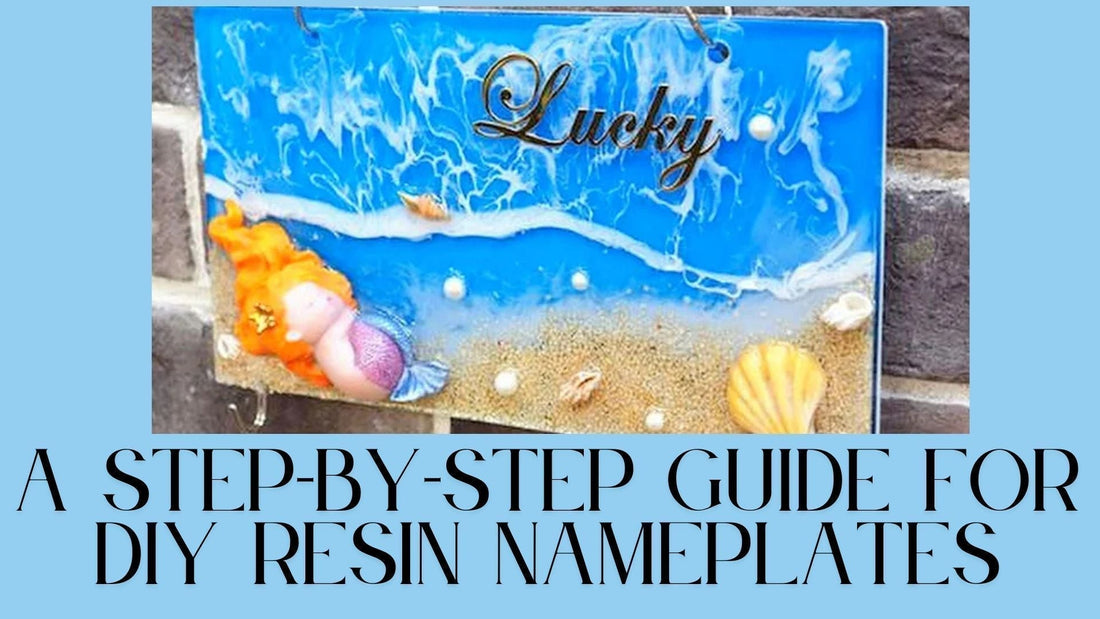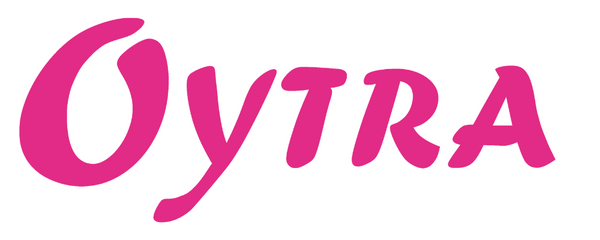
DIY Resin Name Plates for Home Decor
Share
A resin nameplate is a beautiful and durable way to personalize your space, whether it's for your home, office, or as a thoughtful gift. DIY Resin nameplates are glossy and long-lasting. With a few basic and good-quality supplies, you can create custom nameplates that reflect your unique style.
Here's a step-by-step guide to help you get started:
Step 1: Start with the Magical Potion – Resin and Hardener Mixing
The first step for any resin project is mixing. Create the mixture of art resin and hardener by vigorously yet patiently stirring them together in a container for at least 3 minutes.
Be precise about the resin-to-hardener ratio—this determines how clear, strong, and bubble-free your final piece will be.

Step 2: Adding Pigments, Glitters, and Pressed Flowers (First Pour)
Pigment Options:
For an opaque, solid colour in your end product, use liquid resin pigments. Just a few drops can create a rich, vibrant hue. Check out Oytra’s Set of 6 Colours, which offers a spectrum of shades to choose from.
For a tinted, translucent, glass-like finish, try Oytra’s set of 6 shades of mica powder. This will give your rakhi a beautiful shimmer and a semi-transparent look that catches the light.

If you fancy some shimmer, you can go for glitter flakes.
Think of the mould as your canvas, where you can use all your freedom and let your wildest imagination take over the reins.
Pouring & Design Ideas:
Ocean Effect:-
Distinct Glitter Border with Layered Center:
Create a small, concentrated mixture of glitter powder and resin (using more glitter powder than resin, aiming for a non-flowy consistency).
Carefully arrange this mixture along all the borders of your mold to create a thick, distinguishable glittery border.
After creating the glitter border, pour a thicker boundary of pigmented resin in a complementary, slightly lighter shade. Leave space in the center for another pour.
Fill the remaining space in the middle with either an even lighter shade of the same color or with plain, clear resin for a transparent, glass-like finish.
Contrast:
Fill one half of your mold with plain, clear resin, adding golden or silver flakes for a delicate shimmer.
Once this half has started to set slightly (or if you're careful to keep them separate), fill the other half of the mold with a pigmented resin of your chosen color. This creates a striking contrast between a translucent, metallic section and a solid color.
Multi-Colored Effect:
Pour two or more colors side by side into the mold, allowing them to gently blend for a stunning effect.
Once you've poured your resin, use a heat gun over the mold. This helps to release any trapped air bubbles, ensuring a smooth and clear finish.
Curing, the second layer of decorations, and the final coating-
Now, let this layer fully cure.
If you intend to do this second layering, ensure the first layer is thin and leaves space for the other layer in the mould.
Design inspiration!:
For design
Step 3: Curing & Second Layering-
First Layer Cure: Allow the first layer of resin to fully cure. Refer to your resin's instructions for curing times, as this can vary.
Second Layer (Optional)
If you're thinking of adding a second layer of decorations or resin, just make sure your first layer is thin enough to leave plenty of space in the mold. Think of your mold as a canvas—it's all about letting your creativity flow freely!
This second layer is perfect for embedding more elements:
-
Dried flowers or decorative stones: Arrange these delicately in the corners or along the angles of your design for an elegant touch.
-
Customizable metallic name stickers: Place these precisely to personalize your piece even further.
Once your decorations are arranged, carefully pour your final layer of resin to encapsulate everything.
Now wait for the beauty to come to life!
Explore other beginner-friendly kits by Oytra: personalized keychains for gifting, tea coasters, pendants, and clocks.
With OYTRA ART RESIN KITS, you'll have plenty of room to get your hands dirty and truly embrace the inevitable messy starts and mistakes that are bound to happen.
For a similar step-by-step guide for each of these kits, visit the Art Resin blog section on Oytra's official website.
